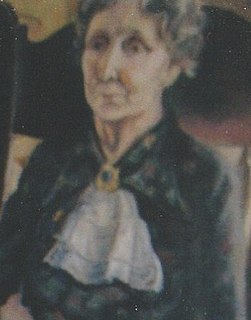
Pima County is a county in the south central region of the U.S. state of Arizona. As of the 2010 census, the population was 980,263, making it Arizona's second-most populous county. The county seat is Tucson, where nearly all of the population is centered. The county is named after the Pima Native Americans who are indigenous to this area.

Pima is a town in Graham County, Arizona, United States. As of the 2010 census, the population of the town was 2,387, up from 1,989 at the 2000 census. The estimated population in 2015 was 2,524. Pima is part of the Safford Micropolitan Statistical Area.

John W. "Jack" Swilling was an early pioneer in the Arizona Territory. He is commonly credited as one of the original founders of the city of Phoenix, Arizona. Swilling also played an important role in the opening of the central Arizona highlands to white settlement. His discoveries resulted in a gold rush to the region, and this in turn led to the establishment of Arizona's first territorial capital at the mining town of Prescott.

The California Column was a force of Union volunteers sent to Arizona and New Mexico during the American Civil War. The command marched over 900 miles from California through Arizona and New Mexico Territory to the Rio Grande and as far east as El Paso, Texas, between April and August 1862.

The Salt River Pima–Maricopa Indian Community comprises two distinct Native American tribes—the Pima and the Maricopa (Piipaash)—many of whom were originally of the Halchidhoma (Xalchidom) tribe. The community was officially created by an Executive Order of US President Rutherford B. Hayes on June 14, 1879. The community area includes 53,600 acres (217 km2), of which 19,000 remain a natural preserve. The community is a federally recognized tribe located in Arizona.

Richard Cunningham McCormick, Jr. was an American politician, businessman, and journalist. He served as the second Governor of Arizona Territory, three time Delegate to the U.S. House of Representatives from Arizona Territory, and as a Member of the U.S. House of Representatives from New York. McCormick's other accomplishments include service as a war correspondent during two different conflicts and creation of two Arizonan newspapers.
White Mill, White Mills and White's Mill may refer to:
Company A, Arizona Rangers was one of the Confederate military units raised in the Confederate Arizona Territory.
Fort Barrett was a temporary earthwork built by the United States Army's California Column in 1862 during the American Civil War. It was located in the Pima Villages two miles from the Gila river nearby Casa Blanca, New Mexico Territory and was built around the mill of settler Ammi M. White to protect it and provide a safe location to gather food and forage from the Pima people for the advance on Tucson. The fort was named after Lieutenant James Barrett who was killed in the Battle of Picacho Peak. Following the capture of Tucson in May the construction of the post ceased, and was abandoned, except as a post for vedettes and express riders.
The 4th Arizona Territorial Legislative Assembly was a session of the Arizona Territorial Legislature which ran from September 4, 1867, till October 7, 1867, in Prescott, Arizona. Among the sessions accomplishments were establishment of the territory's first "permanent" capital and creation of the territory's first school district.

Charles A. Shibell was a teamster, miner, hotel owner, customs inspector, recorder, and Pima County, Arizona County Sheriff and a contemporary of Wyatt Earp and his brothers. Shibell promised a job as Deputy Sheriff to Earp, but when Earp announced his support for Bob Paul as the next sheriff, Shibell appointed Earp's antagonist Johnny Behan to the position instead.
Isham Reavis was an American jurist who served as an Associate Justices of the Supreme Court of Arizona Territory.

Twin Buttes is a populated place on the east flank of the Sierrita Mountains about twenty miles south of Tucson, in Pima County, Arizona. Named after a prominent hill located next to the town, Twin Buttes was founded as a small mining town around 1903 and abandoned around 1930. Much of the actual town site is now buried underneath mine tailings, and all that remains is the Twin Buttes Cemetery.

San Xavier is a populated place in Pima County, Arizona, seventeen miles southwest of Tucson, and six miles northwest of Sahuarita. Originally a small silver mining camp from the 1880s, today San Xavier is little more than a collection of rural homes and partially abandoned mines. The ghost towns of Azurite and Mineral Hill were located about one mile north of San Xavier. Twin Buttes was five miles southeast.
Robert Nelson "Bob" Leatherwood was an American businessman and politician who served three terms in the Arizona Territorial Legislature and two years as Mayor of Tucson, Arizona Territory.
James Henry Toole served four terms as mayor of Tucson, Arizona. The first two terms were 1873 and 1874. The second two terms were 1878 and 1879.
Lionel Mark Jacobs was an American businessman and politician. Moving to Arizona Territory with his brother in 1867 to open a mercantile business, his business interests expanded into financial services and he was a co-founder of Tucson's first bank. Politically he was a member of the Arizona Territorial Legislature and served as territorial treasurer.

Sandwash Mill is a populated place situated in Pima County, Arizona, right along the international border with Mexico. It has an estimated elevation of 3,950 feet (1,200 m) above sea level.

Trinidad Swilling Shumaker, known as "The Mother of Phoenix" was a Phoenix pioneer and the wife of Jack Swilling, the founder of Phoenix. Mrs. Swilling was involved in local civic activities and promoted the public recognition of her husband as founder of Phoenix. She was also involved in dispute which made the local news as to who was the first White woman to settle in the Phoenix townsite. In 1868, Mrs. Swilling founded the first pioneer home in the Salt River Valley.












